The limitations on access not only contribute to unsafe practices but also reinforce the social stigma associated with abortion.
Bangladesh currently lacks a comprehensive abortion law, permitting the procedure only in circumstances aimed at saving a woman’s life, as outlined in the Bangladesh Penal Code of 1860 (Sections 312-316).
Instead, the government offers menstrual regulation (MR), a service included in the national family planning programme since 1979. MR can be performed by trained mid-level providers within 10 weeks of a missed menstrual period and by a doctor within 12 weeks.
This MR policy significantly reduces the impact of the Penal Code for pregnancies during the first trimester. However, it poses serious challenges for safe abortion services for pregnancies beyond 12 weeks.
The limitations on access not only contribute to unsafe practices but also reinforce the social stigma associated with abortion. Furthermore, the restrictive laws complicate efforts to raise awareness, creating stigma surrounding reproductive health.
International Safe Abortion Day, observed on September 28, serves as a reminder of the ongoing global need to decriminalize abortion and ensure safe access for all who need it, aligning with the promises enshrined in the Sustainable Development Goals (SDGs).
According to an analysis published in the journal BMJ Global Health, in Bangladesh in 2015–2019, there were a total of 5,330,000 pregnancies annually. Of these, 2,630,000 pregnancies (49%) were unintended and 1,580,000 (30%) ended in abortion.
The Bangladesh Demographic and Health Survey 2017 found that about 72% of women of reproductive age were aware of MR services.
Gynecologist Dr Fahmida Naz told the Dhaka Tribune that many women suffer due to a lack of safe abortion options: “We have a dual problem. First, the campaign to promote contraceptive use is not widespread, leading to many unwanted pregnancies. Second, women often do not have access to safe procedures for abortion.”
“We don’t refer to MR as abortion, MR is a procedure to manage the menstrual cycle when menstruation is absent for a short duration. There are specific medications used for MR, but they must be taken within two months. However, we often see women in shock after taking these medications three or four months into their pregnancy, typically prescribed by quacks (unqualified individuals). They suffer from heavy bleeding that has led to shock,” she said.
“This situation can become life-threatening. While there are government facilities where MR can be performed safely, many women avoid these options due to social stigma and lack of acceptance. Instead, they often seek help from unskilled providers. Additionally, many senior doctors refuse to provide assistance or to refer patients, based on religious beliefs, thinking that MR should not be used,” she said.
Melissa Cockroft, global lead for abortion at the International Planned Parenthood Federation, said in a webinar on Safe Abortion Day: “Abortion can be provided safely even if it is provided or occurs in a country where abortion is legally restricted. Similarly, an unsafe abortion can be provided in a country context where abortion is legally permitted. So legal status of abortion does not always predict that an abortion will be safe or unsafe – however, restrictions are known to be more likely to lead to unsafe abortions. And legal restrictions do not prevent abortion from occurring. When women, girls and pregnant people want an abortion they will find a means to obtain it, even if it is unsafe.”
Globally, six out of 10 unplanned pregnancies end in induced abortion, and around 45% of these abortions are unsafe, said Shobha Shukla, Coordinator of SHE & Rights (Sexual Health with Equity and Rights) Media Initiative, in the webinar.
“The year 2025 marks 30 years since the Beijing Declaration and Platform for Action were signed in 1995 – they highlighted the impact of unsafe abortion on women’s lives and health, and the need to reduce recourse to abortion through expanded family planning services. Governments need to walk the talk on the promises for gender equality and human rights – with equity and justice,” she said.
SOURCE: Dhaka Tribune, by Nurul Islam Hasib, 5 October 2024
Postscript: More on the history
The above information about the history of why menstrual regulation was introduced in Bangladesh does not cover the whole story. A journal article by researcher Ruth Dixon-Mueller, published in 1988 closer to the time that MR was introduced, provides additional information. The following is an extended abstract from her paper, found at PubMed:
Innovations in reproductive health care: menstrual regulation policies and programs in Bangladesh by Ruth Dixon-Mueller, in Studies in Family Planning 1988 May-Jun;19(3):129-40.
Abstract
Although abortion is legally restricted in Bangladesh, early menstrual regulation (MR) as a means of reducing female morbidity and mortality associated with indigenous abortion has been part of the government’s health and family planning efforts since 1975. Approximately 3,000 doctors and 2,600 female family planning workers (Family Welfare Visitors) have been trained in techniques of MR in a program intended ultimately to serve rural populations in all areas of the country. This paper assesses MR training and service programs in Bangladesh for their capacity to provide high quality reproductive health care for very poor women who are trying to control their fertility. Among other advantages, MR programs serve as an entry point for many women to contraceptive services and to maternal health care.
PIP
The place of menstrual regulation in Bangladesh is reviewed, beginning with a survey of the procedure’s history, legal basis, traditional background, then an account of training and service delivery in Bangladesh. Menstrual regulation (MR) can have a place in societies that have the concept of bringing on the delayed period with traditional treatment, as in the Bengali term “washing out the uterus.” Similarly, MR may be legal where abortion is only forbidden after pregnancy is confirmed. Three programs of MR training and service have been introduced in Bangladesh: the Menstrual Regulation Training and Service Program begun by the Pathfinder Fund in 1978, now a quasi-governmental institution based in hospitals; the Mohammedpur Fertility Service and Training Center or Model Clinic, a comprehensive family planning agency; and the Bangladesh Women’s Health Coalition, a non-governmental feminist organization training only female family welfare visitors. Approximately 3,000 physicians and 2,600 female welfare visitors have been trained since 1976. 70,000 procedures are reported yearly, or 400,000 MRs since July 1975. The number of informally trained operators is unknown, and the actual number of MRs is estimated to be about 240,000 annually. Most clients are married, uneducated, kept in seclusion. Unmarried, widowed, divorced or abandoned women, called “social cases”, are treated with special sympathy since abortion is illegal and pregnancy for them is severely stigmatized. The complication rate for the hand-held suction MR is extremely low, especially considering the field conditions that often exist. Complications are minimized by rejecting about 30% of candidates, usually for advanced pregnancy. As a post-coital method, MR has the advantage of providing an excellent entry into family planning and other health care services.
+++
POSTSCRIPT
The above visual is from: “Events leading to the approval of menstrual regulation in Bangladesh” https://arrow.org.my/wp-content/uploads/2019/07/Bangladesh_MRM-Report_2019.pdf, p.9.
Perhaps no one looked far enough ahead in those days to realise that MR would become too limited, when its main success was to allow first trimester abortion at a time when no procedure that was called “abortion” was acceptable.



